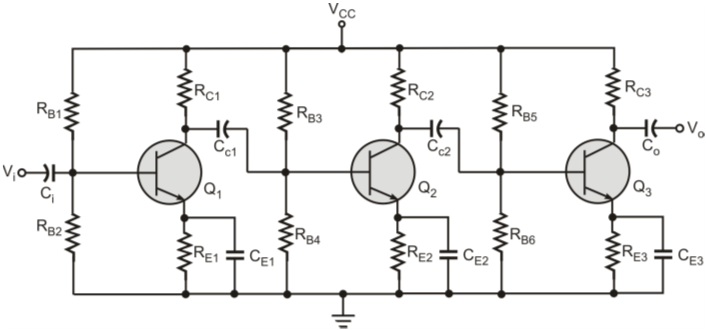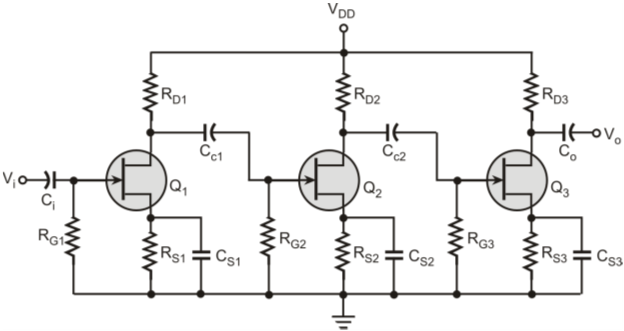Cascaded three-stage RC-coupled BJT amplifier
Let the h-parameters of the transistor Q1 be hie1, hfe1, hre1 and hoe1; of transistor Q2 be hie2, hfe2, hre2 and hoe2 and that of transistor Q3 be hie3, hfe3, hre3 and hoe3.
Voltage gain of the third stage is given by
Assuming 1/hoe >> RC3, the equation can be simplified as
Similarly, the gain for the second stage Av2, assuming 1/hoe2 >>
is given by
The gain for the first stage Av1, assuming 1/hoe1 >>
is given by
The overall voltage gain Av is given by the product of the voltage gains of the three stages:


















